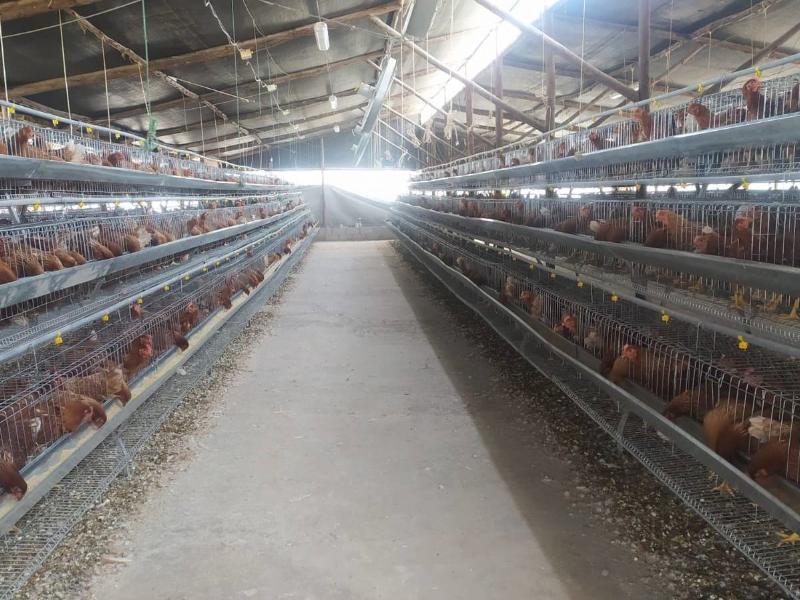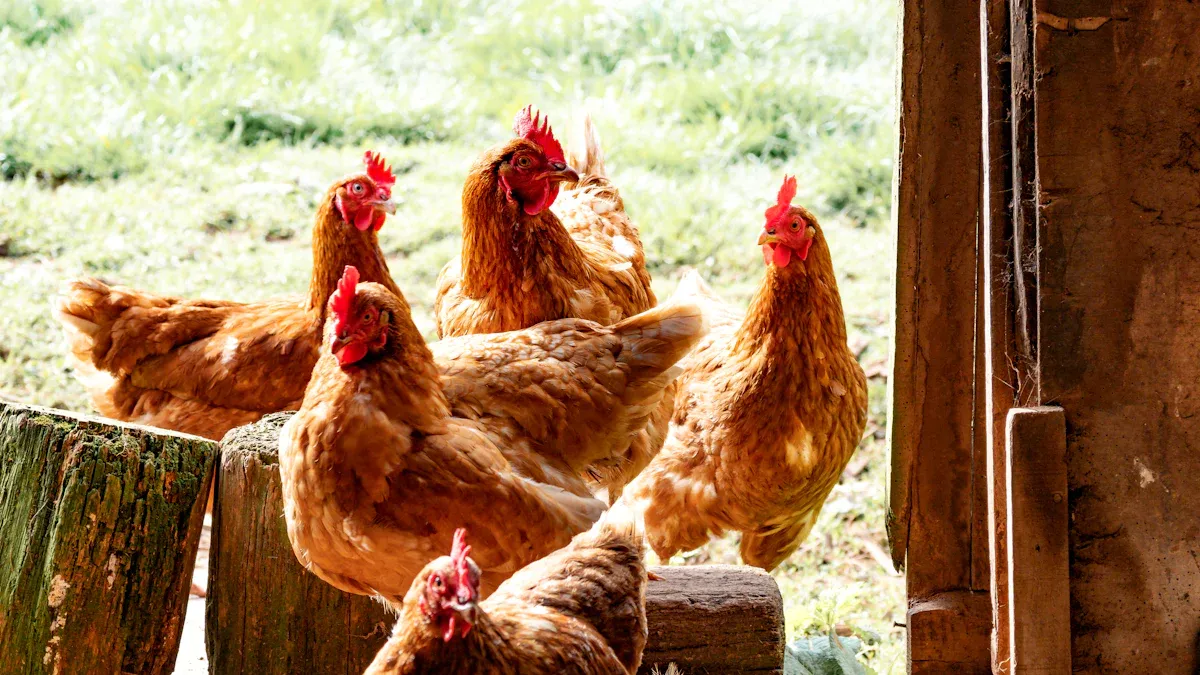
Success Stories of 20,000 Laying Hens Farms in Ghana
Imagine a farm with 20,000 hens laying eggs daily. These farms are more than just numbers; they show progress and hard work. Farmers use new methods to make eggs faster and better. This change has improved egg farming and inspired others to aim higher. As big farms become more popular, they are changing lives and creating jobs all over the country.
The Evolution of 20,000 Laying Hens Farms

Moving from small farms to large poultry operations
Think about small farms with a few hens wandering around. These farms helped families for years but couldn’t supply enough eggs. Farmers saw the chance to grow bigger and meet demand. By starting large poultry farms, they made more eggs and earned more money. This change wasn’t just about numbers; it was about thinking differently. Farmers switched from hard manual work to using faster, easier systems. This shift began a big change in Ghana’s poultry farming.
How 20,000 bird farms changed everything
Picture running a farm with 20,000 hens. It sounds hard, but many farmers do it now. These farms show how farming can grow and improve. They prove that big farms can succeed and make good profits. With better tools and smarter ways to work, these farms make lots of eggs. They also inspire others to dream bigger and aim higher. Seeing these farms succeed shows that anything is possible. This growth has completely changed poultry farming in Ghana.
Important steps in building these farms
Getting to 20,000 bird farms didn’t happen quickly. It started with small changes, like better food and safer homes for hens. Over time, farmers used new tools like automatic feeders and climate controls. These ideas made hens healthier and farms more productive. Another big step was teamwork between farmers, experts, and groups. By working together and sharing ideas, farmers solved problems and grew stronger. Each step brought Ghana’s poultry farming closer to a brighter future.
Innovative Practices Behind the Success
Using machines and modern tools
How do farms with 20,000 hens run daily? They use machines. Farmers now have tools like automatic feeders and water systems. These tools save time and make work easier. For example, machines collect eggs gently and quickly. This keeps eggs clean and safe from damage. Climate control systems are also important. They keep the hens comfortable in any weather. By using these tools, farmers can grow their farms and keep hens healthy.
Good food and care for healthy hens
Healthy hens lay more eggs. Farmers give them good food and care. The food has all the nutrients hens need to stay strong. Regular vet check-ups keep the hens free from sickness. Vaccines and other care protect them from diseases. When farmers take care of their hens, the farm does better. This method helps farms grow and succeed.
Turning waste into something useful
Big farms make a lot of waste. Managing it well is very important. Many farmers turn waste into useful things. For example, chicken manure can become organic fertilizer. This reduces waste and earns extra money. Some farms even turn waste into energy using biogas systems. These ideas help the environment and make farms better. By managing waste wisely, farmers help create a cleaner world.
Overcoming Challenges in Large-Scale Poultry Farming

Dealing with feed shortages and cutting costs
Big poultry farms need lots of feed daily. Sometimes, feed runs out, making things hard. To fix this, plan ahead and buy from different suppliers. This way, you’ll always have enough feed for your hens. Another idea is to grow some feed on your farm. Planting crops like maize or soybeans can save money. You can also use cheaper feed options like cassava or rice bran. These choices lower costs but still keep the feed good. By planning well, your farm can avoid problems.
Keeping hens safe from diseases
Diseases can hurt your farm and lower egg production. To stop this, use strong safety rules. Limit who can visit your farm and make sure they follow hygiene steps. Clean tools and equipment often to kill germs. Vaccinate your hens on time to keep them healthy. If a hen gets sick, separate it from the others right away. These actions protect your hens and help your farm do well.
Handling competition and changing prices
The egg market can change quickly. Prices for eggs and feed go up and down, and competition is tough. To succeed, build a good name for your farm. Sell fresh, high-quality eggs and deliver them on time. Try selling directly to people or local stores for better prices. You can also earn extra by selling manure or starting a small hatchery. By staying creative and flexible, you can handle market changes easily.
The Broader Impact of 20,000 Laying Hens Farms
Helping more people get enough food with more eggs
Big poultry farms help improve food supply. With 20,000 hens, your farm makes many eggs daily. Eggs are full of protein and nutrients that people need. By making more eggs, families can buy healthy food at lower prices. This helps fight hunger and poor nutrition in Ghana. Every egg your farm produces helps build a healthier country.
Giving jobs and helping rural areas grow
Your farm does more than make eggs; it creates jobs. Workers are needed to feed hens, clean, and collect eggs. These jobs give people steady income and better lives. Your success also inspires others to start their own farms. When farms grow, communities become stronger and richer. Together, you help rural areas thrive.
Making Ghana a leader in poultry farming
Your farm helps Ghana become known for great poultry farming. With 20,000 hens, you can meet local needs and sell eggs to nearby countries. This boosts Ghana’s economy and its place in the market. By keeping high standards, your farm shows what Ghana can achieve. It becomes a sign of progress and success for the country.
Lessons and Future Opportunities
What we learn from 20,000 laying hens farms
The success of these farms teaches important lessons for poultry farming. First, using new tools and ideas helps farms grow faster. Modern methods make work easier and more productive. Second, caring for hens is very important. Healthy hens lay more eggs, which helps the farm succeed. Lastly, teamwork is key. Working with experts, farmers, and groups can solve problems and open new doors. These lessons show that with effort and smart choices, great results are possible.
Ways to grow and copy this model
The 20,000 hens model works well and can grow bigger. Adding more hens to your farm means more eggs and income. You can also start similar farms in other areas, especially in rural places with resources. Teaching new farmers through training programs can spread this idea. Sharing what you know can inspire others to try this model. This helps the poultry industry grow stronger. Thinking big and acting boldly can lead to endless possibilities.
How government and private companies can help
Help from the government and private companies can grow your farm. Governments can give loans, training, and support to farmers. Private companies can supply better tools, feed, and vet services. When these groups work together, they create a helpful system for farmers. For example, they can fund research to improve farming methods. By teaming up, they can solve problems and create new chances for success.
The story of 20,000 hen farms shows great possibilities. These farms changed poultry farming in Ghana with new ideas. They prove big farms can succeed with good tools and care. They help provide more food, create jobs, and inspire others. Now, it’s your chance to think big and act boldly. Use modern farming methods and find new opportunities. Your hard work can improve Ghana’s poultry industry and make a lasting difference.
FAQ
What helps 20,000 laying hens farms succeed?
These farms succeed by using modern tools and giving hens good food and care. They also manage waste smartly and keep farms clean and safe. By working efficiently and thinking about the future, they make more eggs and earn more money.
How can I begin a 20,000 laying hens farm?
Learn about poultry farming and make a strong plan. Buy good equipment, get funding, and find trusted suppliers for feed and chicks. Work with experts to guide you. Start small if needed, then grow as you learn more.
Are these farms good for the environment?
Yes, many farms turn chicken waste into fertilizer or biogas. These ideas lower harm to the environment and bring extra income. By using resources wisely, you can run a green and successful farm.
How do these farms help local areas?
They give people jobs, provide more food, and inspire others to farm. Workers earn steady pay, and families get affordable, healthy eggs. These farms also help rural areas grow stronger and more independent.
Can small farmers follow this model?
Yes! Start by improving your farm with better food, housing, and tools. Slowly grow your flock and use modern methods. With hard work and smart choices, you can build a bigger farm.
